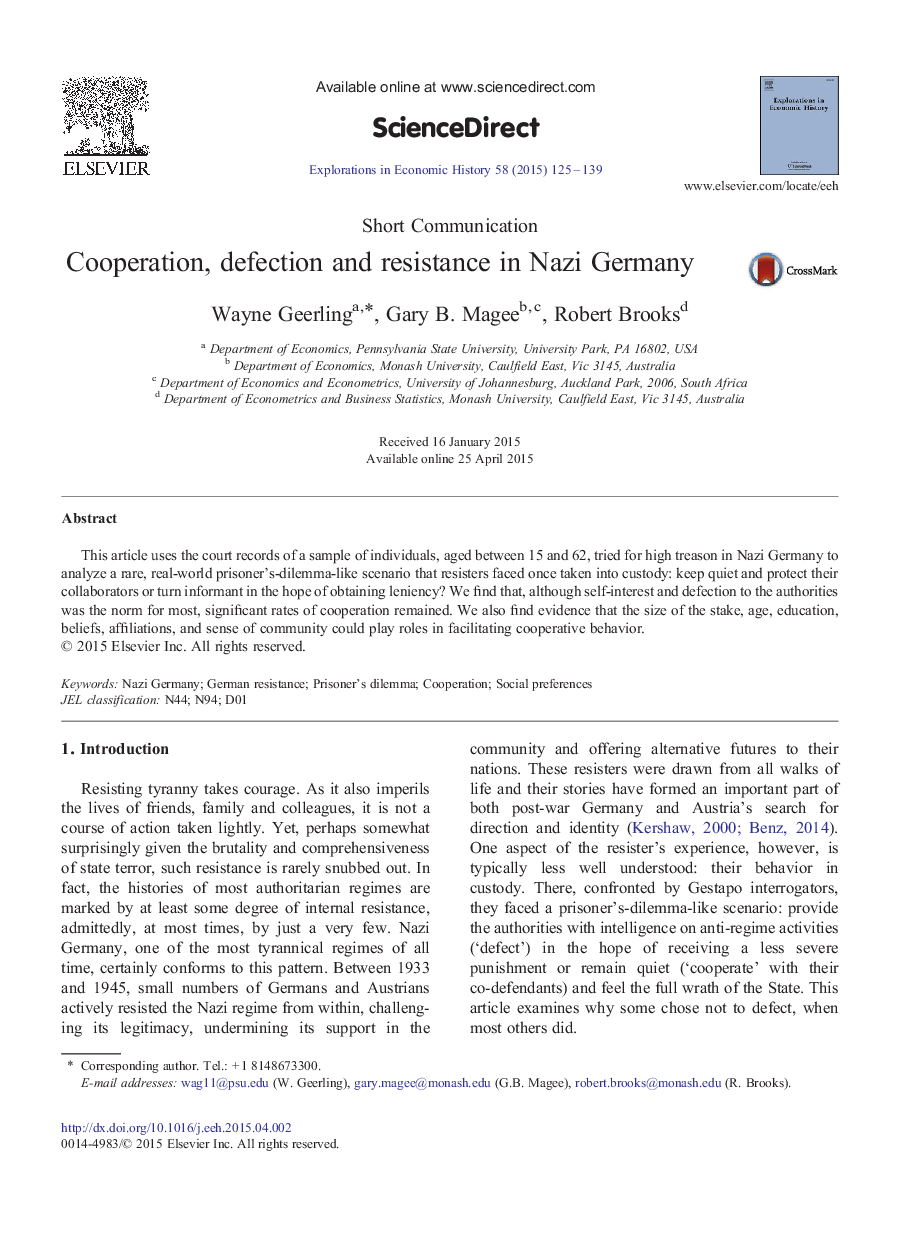| Article ID | Journal | Published Year | Pages | File Type |
|---|---|---|---|---|
| 5068720 | Explorations in Economic History | 2015 | 15 Pages |
Abstract
This article uses the court records of a sample of individuals, aged between 15 and 62, tried for high treason in Nazi Germany to analyze a rare, real-world prisoner's-dilemma-like scenario that resisters faced once taken into custody: keep quiet and protect their collaborators or turn informant in the hope of obtaining leniency? We find that, although self-interest and defection to the authorities was the norm for most, significant rates of cooperation remained. We also find evidence that the size of the stake, age, education, beliefs, affiliations, and sense of community could play roles in facilitating cooperative behavior.
Related Topics
Social Sciences and Humanities
Arts and Humanities
History
Authors
Wayne Geerling, Gary B. Magee, Robert Brooks,
